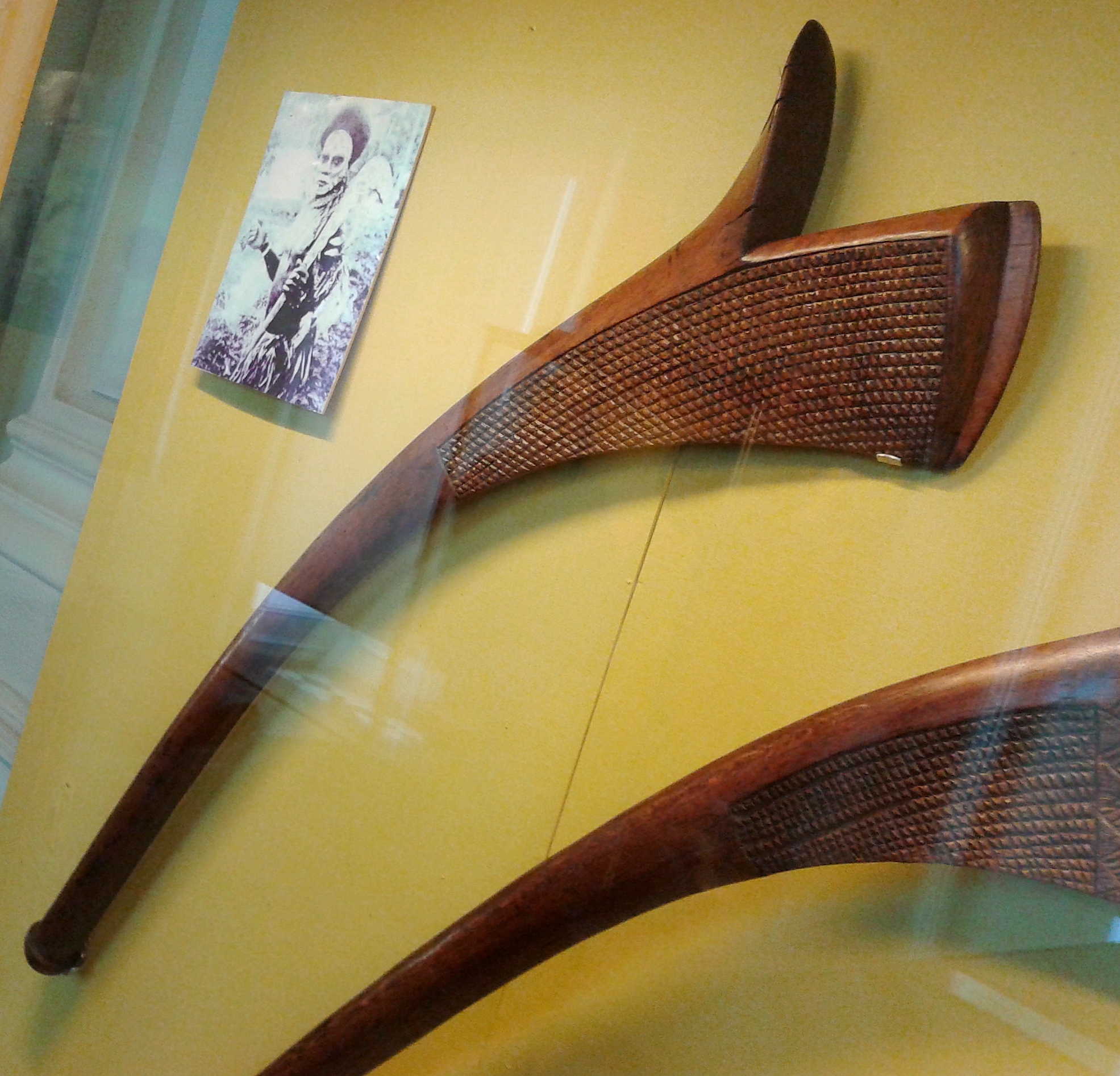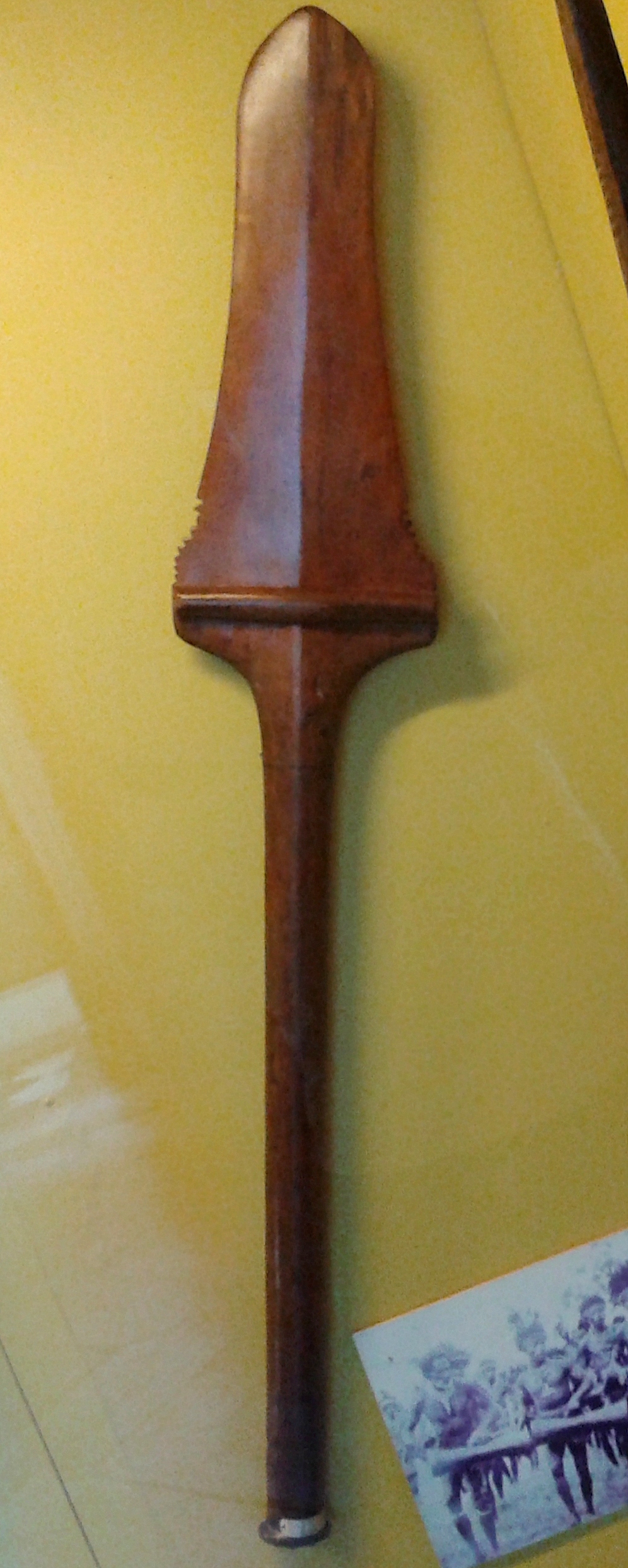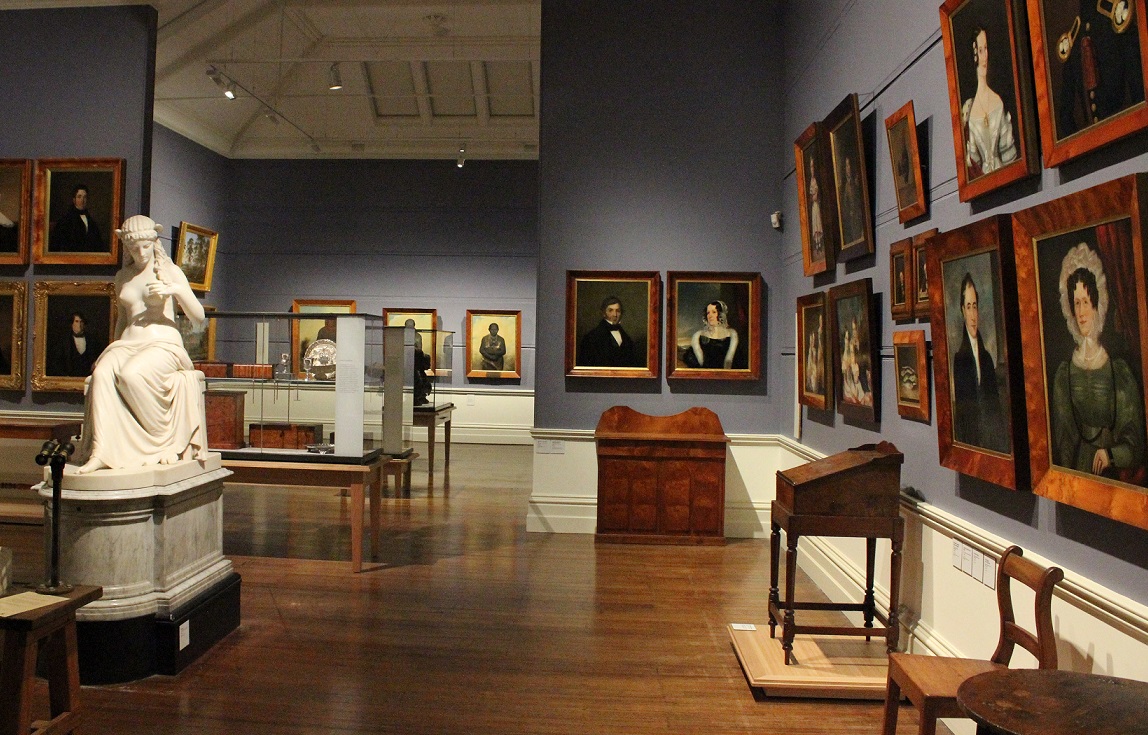|
Sali (weapon)
A Sali or Cali or Tebetebe is a war club from Fiji. Uses in Fiji Usually cut from a hardwood type iron wood it is intended for war. It differs from the Gata by the width of its striking head. It is named Sali because of its resemblance to the clawed flower of the plant of the same name (Sali) of the genus Musa of the banana family.Anthony JP Meyer, ''Art océanien'', Könemann, 1995, p. 473 See also * Totokia * Ula * Gata * Culacula * Bulibuli References Bibliography * John Charles Edler, Terence Barrow, ''Art of Polynesia'', Hemmeter Publishing Corporation, 1990. * Rod Ewins, ''Fijian Artefacts: The Tasmanian Museum and Art Gallery Collection'', Tasmanian Museum and Art Gallery, 1982. * ''Bulletin of the Fiji Museum'', Numeros 1–2, Fiji Museum, 1973. * Fergus Clunie,''Fijian weapons and warfare.'' Fiji Museum The Fiji Museum is a museum in Suva, Fiji located in the capital city's botanical gardens, Thurston Gardens. Background The museum is a statutory body and is un ... [...More Info...] [...Related Items...] OR: [Wikipedia] [Google] [Baidu] |
Club (weapon)
A club (also known as a cudgel, baton, bludgeon, truncheon, cosh, nightstick, or impact weapon) is a short staff or stick, usually made of wood, wielded as a weapon since prehistoric times. There are several examples of blunt-force trauma caused by clubs in the past, including at the site of Nataruk in Turkana, Kenya, described as the scene of a prehistoric conflict between bands of hunter-gatherers 10,000 years ago. Most clubs are small enough to be swung with one hand, although larger clubs may require the use of two to be effective. Various specialized clubs are used in martial arts and other fields, including the law-enforcement baton. The military mace is a more sophisticated descendant of the club, typically made of metal and featuring a spiked, knobbed, or flanged head attached to a shaft. Examples of cultural depictions of clubs may be found in mythology, where they are associated with strong figures such as Hercules or the Japanese oni, or in popular culture, where t ... [...More Info...] [...Related Items...] OR: [Wikipedia] [Google] [Baidu] |
Fiji
Fiji ( , ,; fj, Viti, ; Fiji Hindi: फ़िजी, ''Fijī''), officially the Republic of Fiji, is an island country in Melanesia, part of Oceania in the South Pacific Ocean. It lies about north-northeast of New Zealand. Fiji consists of an archipelago of more than 330 islands—of which about 110 are permanently inhabited—and more than 500 islets, amounting to a total land area of about . The most outlying island group is Ono-i-Lau. About 87% of the total population of live on the two major islands, Viti Levu and Vanua Levu. About three-quarters of Fijians live on Viti Levu's coasts: either in the capital city of Suva; or in smaller urban centres such as Nadi—where tourism is the major local industry; or in Lautoka, where the Sugarcane, sugar-cane industry is dominant. The interior of Viti Levu is sparsely inhabited because of its terrain. The majority of Fiji's islands were formed by Volcano, volcanic activity starting around 150 million years ago. Some geo ... [...More Info...] [...Related Items...] OR: [Wikipedia] [Google] [Baidu] |
Gata Or Satall, War Club From Fiji - Clavas - Fiji MN 01
Davionte Ganter, known professionally as GaTa, is an American rapper and actor known for his role in the FXX TV series ''Dave'', as well as for being the hype man for rapper Lil Dicky throughout his career as well as on the show. Early life and education GaTa grew up in South Los Angeles, where he was adopted out of foster care by an aunt whom he considers his mother. He never knew his biological mother or father. Inspired by the rapper Da Brat, he began rapping while a student at Audubon Middle School. Career Music As a hype man, GaTa traveled the world performing with rappers including Lil Wayne and Gym Class Heroes. Tyga, GaTa, and his childhood friend Schoolboy Q formed the music label G.E.D., which GaTa says stands for "grinding every day, getting every dollar, getting educated daily." Around 2013, GaTa began working with David Burd, known professionally as Lil Dicky, who would become his close friend and with whom he would later star on the sitcom ''Dave''. After ... [...More Info...] [...Related Items...] OR: [Wikipedia] [Google] [Baidu] |
Iron Wood
Ironwood is a common name for many woods or plants that have a reputation for hardness, or specifically a wood density that is heavier than water (approximately 1000 kg/m3, or 62 pounds per cubic foot), although usage of the name ironwood in English may or may not indicate a tree that yields such heavy wood. Some of the species with their common name * ''Acacia aulacocarpa'' (Brush ironwood) * ''Acacia estrophiolata'' (Southern ironwood), central Australia * ''Acacia excelsa'' (Ironwood) * ''Acacia melanoxylon'' (Ironwood) * ''Acacia stenophylla'' (Ironwood), Australia * ''Aegiphila martinicensis'' (Ironwood) * ''Afzelia africana'' (Ironwood) * ''Androstachys johnsonii'' (Lebombo ironwood), southeastern Africa and Madagascar * ''Allagoptera caudescens'', ''Borassus flabellifer'', '' Caryota urens'', ''Iriartea deltoidea'' Black Palm, Palmira wood (Black ironwood) * ''Argania spinosa'' (Morocco ironwood, Thorny, Prickly ironwood) * ''Astronium fraxinifolium'', ''Astronium ... [...More Info...] [...Related Items...] OR: [Wikipedia] [Google] [Baidu] |
Gata (weapon)
The Gata or Gata waka is a war club from Fiji. Uses in Fiji Usually cut from hardwood, it has a snake or rifle shaped head. The word gata means snake in Fijian language. This weapon can be used for war but also for traditional dances and ceremonies. Its shape is very similar to the ''kiakavo'' used for dancing.Susan Cochrane, Max Quanchi, ''Hunting the Collectors: Pacific Collections in Australian Museums'', p.46 Gallery File:H000293- Club.jpg, Gata File:Two Fijian warriors, photograph by Burton Brothers, 1884.jpg, Fijian warriors, the one on the right with a gata File:Gata waka Fidji 2.jpg, A gata waka club or a kiakavo for dancing Bibliography * John Charles Edler, Terence Barrow, ''Art of Polynesia'', Hemmeter Publishing Corporation, 1990. * Rod Ewins, ''Fijian Artefacts: The Tasmanian Museum and Art Gallery Collection'', Tasmanian Museum and Art Gallery The Tasmanian Museum and Art Gallery (TMAG) is a museum located in Hobart, Tasmania. The museum was established in ... [...More Info...] [...Related Items...] OR: [Wikipedia] [Google] [Baidu] |
Totokia
The ''totokia'' (also pineapple club or beaked battle hammer) is a type of club or battlehammer from Fiji.Eric Kjellgren, How to Read Oceanic Art' (Metropolitan Museum of Art/Yale University Press, 2014), p. 153. The ''totokia'' was called the "pineapple club" because of the spiked ball behind the weapon's beak.Ron Ewins, "The Perils of Ethnographic Provenance: The Documentation of the Johnson Fiji Collection in the South Australian Museum" in ''Hunting the Collectors: Pacific Collections in Australian Museums'' (eds. Susan Cochrane & Max Quanchi: Cambridge Scholars Publishing, 2007), p. 62. The name is a misnomer; the shape actually is modeled after that of the fruit of the ''pandanus''. The spike ("beak") and head of the weapon were used to puncture the skull of the enemy and crush the head. In addition to its functional use as a weapon of war, ''totokia'' were also status symbols. [...More Info...] [...Related Items...] OR: [Wikipedia] [Google] [Baidu] |
Ula (weapon)
The Ula or I Ula Tavatava is a throwing war club from Fiji. Uses in Fiji Usually cut from a hardwood type of iron wood, it has a round end made up of the root knot and is sometimes called "pineapple club" for his particular shape. It can be launched or used as a club.Henry Nottidge Moseley, ''Notes by a Naturalist on the "Challenger": Being an Account of Various observations'', Macmillan and Co, London, 1879, p.338 Some types of Ula have a smooth head. Gallery File:Fijian War Club in Museum of Methodism.jpg, Ula with pineapple ball. File:Ula Fidji.png, Ula with round ball. File:Clubs, Fiji Islands, wood - Pacific collection - Peabody Museum, Harvard University - DSC05762.JPG, Ula collection. Bibliography * John Charles Edler, Terence Barrow, ''Art of Polynesia'', Hemmeter Publishing Corporation, 1990. * Jean-Edouard Carlier, ''Archipels Fidji - Tonga - Samoa: La Polynésie Occidentale'', Voyageurs & curieux, 2005. * Rod Ewins, ''Fijian Artefacts: The Tasmanian Museum and Art Ga ... [...More Info...] [...Related Items...] OR: [Wikipedia] [Google] [Baidu] |
Culacula
A Culacula is a paddle war club from Fiji. Uses in Fiji Usually cut from a hardwood type of iron wood, it has a broad blade and was used by chiefs or priests to deflect arrows during war.Susan Cochrane, Max Quanchi, ''Hunting the Collectors : Pacific Collections in Australian Museums'', 2014, p. 4/ref> Bibliography * Fergus Clunie, ''Fijian Weapons & Warfare'', 2003. * Jean-Edouard Carlier, ''Archipels Fidji - Tonga - Samoa: La Polynésie Occidentale'', Voyageurs & curieux, 2005. * Rod Ewins, ''Fijian Artefacts: The Tasmanian Museum and Art Gallery Collection'', Tasmanian Museum and Art Gallery, 1982. References See also * Totokia * Gata Davionte Ganter, known professionally as GaTa, is an American rapper and actor known for his role in the FXX TV series ''Dave'', as well as for being the hype man for rapper Lil Dicky throughout his career as well as on the show. Early life an ... * Sali * Ula * Bulibuli Throwing clubs Clubs (weapon) Primitive weapons Rit ... [...More Info...] [...Related Items...] OR: [Wikipedia] [Google] [Baidu] |
Bulibuli
A bulibuli or vunikau bulibuli is a Fijian war club. Uses The ''bulibuli'' has a straight and fair long handle (difference with a '' Ula Bulibuli'') and a rounded percussion head. At its end the striking head is rounded and provided with round protuberances, similar to buttons, intended to strengthen the percussion effect. The ''bulibuli'' can be decorated with inlays (shells, etc.).''Bulletin of the Fiji Museum'', Numéros 1 à 2, Fiji Museum, 1973, p.18 Bibliography * Fergus Clunie, ''Fijian weapons and warfare.'' Fiji Museum 2003, . * John Charles Edler, Terence Barrow, ''Art of Polynesia'', Hemmeter Publishing Corporation, 1990. * Jean-Edouard Carlier, ''Archipels Fidji - Tonga - Samoa: La Polynésie Occidentale'', Voyageurs & curieux, 2005. * Rod Ewins, ''Fijian Artefacts: The Tasmanian Museum and Art Gallery Collection'', Tasmanian Museum and Art Gallery, 1982. See also * Totokia * Ula * Gata * Culacula * Sali References Bibliography * John Charles Edler, Terence ... [...More Info...] [...Related Items...] OR: [Wikipedia] [Google] [Baidu] |
Tasmanian Museum And Art Gallery
The Tasmanian Museum and Art Gallery (TMAG) is a museum located in Hobart, Tasmania. The museum was established in 1846, by the Royal Society of Tasmania, the oldest Royal Society outside England. The TMAG receives 400,000 visitors annually. History The museum was officially created in 1848, though the collections it housed were much created earlier. It merged a number of disparate collections, including that of the Royal Society of Tasmania. The Mechanics' Institution of Hobart, Van Diemen's Land Agricultural Society and Van Diemen's Land Scientific Society had each attempted to found a museum earlier than this date, the most successful of these being the Mechanics' Institution, but little record remains of what happened to these efforts. Sir John Eardley-Wilmot, 1st Baronet, during his period was Lt. Governor of Tasmania, did much of the work that led to the modern museum. The museum was noted as first being an established institution in the 1848 minutes of the Royal Societ ... [...More Info...] [...Related Items...] OR: [Wikipedia] [Google] [Baidu] |
Fiji Museum
The Fiji Museum is a museum in Suva, Fiji located in the capital city's botanical gardens, Thurston Gardens. Background The museum is a statutory body and is under the administration of the Fiji Museum Act and the Preservation of Objects of Archaeological & Palaeontological Interest Act. History The museum was founded in 1904 by a voluntary association - the Friends of Fiji Museum. During the twentieth century its location moved several times before its current location in Thurston Gardens. Its original location was in the old Town Hall. The museum was opened in 1955 by the Governor of Fiji, Sir Ronald Garvey. In 2019 a proposal was put forward that part of the site of Thurston Gardens could be developed by the Indian High Commission; this proposal was opposed by the Director of the Fiji Museum, Sipiriano Nemani. In 2021, former director of the museum, Timaima Sagale Buadromo, had an acquittal for corruption charges and abuse of office reversed, in order to await a new trial ... [...More Info...] [...Related Items...] OR: [Wikipedia] [Google] [Baidu] |
Clubs (weapon)
Club may refer to: Arts, entertainment, and media * ''Club'' (magazine) * Club, a ''Yie Ar Kung-Fu'' character * Clubs (suit), a suit of playing cards * Club music * "Club", by Kelsea Ballerini from the album ''kelsea'' Brands and enterprises * Club (cigarette), a Scottish brand of cigarettes * Club (German cigarette), a German brand of cigarettes * Club Med, a holiday company Food * Club (soft drink) * Club Crackers * Club sandwich * Club (biscuit), a brand of biscuits manufactured by Jacob's (Ireland) and McVitie's (UK) Objects * Club (weapon), a blunt-force weapon * Golf club * Indian club, an exercise device * Juggling club * Throwing club, an item of sport equipment used in the club throw * Throwing club, an alternative name for a throwing stick Organizations * Club (organization), a type of association * Book discussion club, also called a book club or reading circle * Book sales club, a marketing mechanism * Cabaret club * Gentlemen's club (traditional) * Health club ... [...More Info...] [...Related Items...] OR: [Wikipedia] [Google] [Baidu] |




